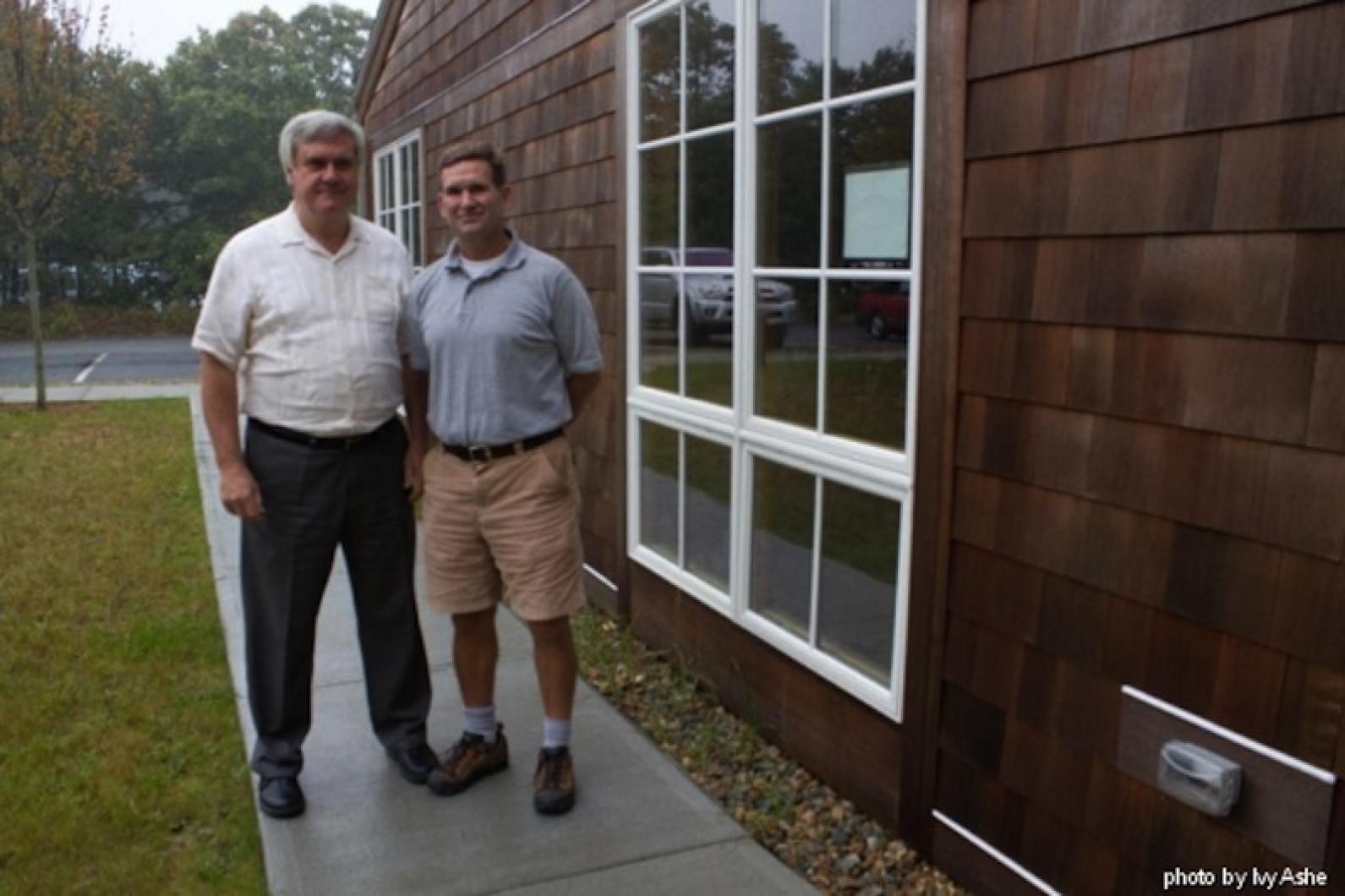Vineyard House, the residential program for early substance abuse recovery, announced a $3 million capital campaign this week to build a new facility in Vineyard Haven.
Board president Mark Jenkins said the new facility — a campus-style complex located on Short Hill Road, off of Holmes Hole Road in Vineyard Haven — will enable the organization to address substance abuse in a fuller scope. Since its inception in 1997, Vineyard House, the only sober-living facility on the Island, has operated out of three separate houses.
“We felt that by moving to a purpose-built facility based on a communal living design to promote interaction and to form strong social bonds, we would have a better outcome,” Mr. Jenkins said in an interview with the Gazette this week. “Our outcomes right now are positive, but we want to do a better job.”
Total construction for the complex is estimated to cost $3 million, one-third of which has already been raised. The remaining funds will come from two other sources: $1 million from the sale of two of the organization’s existing houses and $1 million from fund-raising efforts.
Chilmark summer residents Joel Greenberg and Marcy Gringlas have offered a matching grant for any donation to the capital campaign over $5,000, spurring Vineyard House to go public with their campaign efforts, Mr. Jenkins said.
The organization is targeting fund-raising to be completed by January 2014, with construction to begin that spring.
“We see the finish line,” Mr. Jenkins said.
The $3 million construction figure includes purchase of land, construction, fixtures and furniture, architecture fees and permitting.
Designed by Mashek MacLean Architects, the campus will include two houses for men, one house for women, an office building and a common building with additional rooms and a meeting room for support groups. Total occupancy will accommodate 24 residents. All permitting applications at the local and state level have been approved.
Mr. Jenkins said one of the goals of the new facility “is to help establish this as the heart of recovery on Martha’s Vineyard.”
“There are all these meetings spread across the Island, and that’s fantastic, we’re very supportive of those. But to know there’d be a focal point if someone was in trouble or to be a resource center for recovery, to that extent it will be very helpful as well,” he said.
Vineyard House residents currently live in one of three houses, two houses for men and one house for women, located on Eastville avenue in Oak Bluffs. The male houses are for sale, and the third house will be sold at a later time.
Mr. Jenkins said the two homes on the market are “antique structures,” and while “they’re great, we’ve loved them, we’ve seen amazing things happen in them,” they are designed for single-family use, not for group housing. Both homes are nearly 150 years old.
Wallace & Company Sotheby’s International Realty has donated its services to handle the sales.
Plans to move Vineyard House began in 2005, when the organization purchased just over four acres from Jerry Goodale of Goodale Construction at a discounted price of $270,000. Part of the million dollars already raised went toward the purchase of the land.
In addition to the discounted sale, Mr. Goodale also donated an additional two acres needed for the new facility to meet septic codes.
“It’s very much reflective of the support we have in the community,” Mr. Jenkins said. “Every board we go to, they recognize how important this work is and say, how can we help you?”
The location is close enough to walk to town or use public transportation, but far enough off the road to provide a quiet experience compared to the current location.
“The tradeoff is you’re in a quiet, serene environment, versus a lot of the residents feel they’re still in the midst of chaos [in the current location],” Mr. Jenkins said.
Board member and former director of Vineyard House Brian Mackey said the “campus setting” will allow “the Island recovery community to be more of a part of what we do.”
“In the past we’ve occasionally held AA [Alcoholics Anonymous] or NA [Narcotics Anonymous] meetings at the houses,” he said. “I think we can formalize that a bit more with available space that’s designed for that.”
Residents pay rent, submit to random drug and alcohol testing, upkeep the houses and are actively involved in recovery programs. Vineyard House is not a treatment facility, rather a facility that provides a structured framework, Mr. Mackey said.
“For the average person who ends up going back home, it’s not a matter of controlling your drinking,” Mr. Mackey said. “You have to find a way to stay away from it. That’s what Vineyard House is providing, that connection to other people that realize the same thing.” “Age and socioeconomic standing have no bearing,” he continued. “Kids in their early twenties and people in their seventies. People with more money than they know what to do with, people that can’t hold a job. It’s quite a mix.”
Mr. Jenkins said that the mission of Vineyard House will be enhanced by the move.
“We are the only ones who do what we do on Martha’s Vineyard, where it is generally considered that substance abuse is the biggest health care problem around,” he said. “This issue comes up again and again.”
“Vineyard House was created because people were coming back from the detox and rehab and going back to their old environments and relapsing,” he continued. “Particularly in a small community where triggers are so prevalent, people needed a transition before going back [home]. We really felt that the transition needed was one with some structure.”
“Our goal is not to have these guys be in the house forever. Our goal is to return them to productive and safe lives, and in many, many instances, that’s what we’ve been able to do.”





Comments
Comment policy »